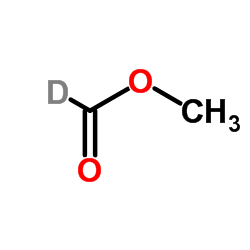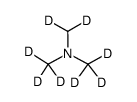1664-98-8
| Name | dideuteriomethanone |
|---|---|
| Synonyms |
d2-formaldehyde
Dideuteroparaformaldehyde Formaldehyde-d2 polymer formaldehyde-d2 Formaldehyde-d Paraformaaldehyde-d6 EINECS 216-775-5 (H)Formaldehyde Formalin-d2 MFCD00144373 perdeuteroformaldehyde Formaldehyde-d2 solution Formaldehyde (13C, 99%; D2, 98%) |
| Density | 0.7±0.1 g/cm3 |
|---|---|
| Boiling Point | -19.5±9.0 °C at 760 mmHg |
| Molecular Formula | CD2O |
| Molecular Weight | 32.038 |
| Flash Point | -75.1±13.7 °C |
| Exact Mass | 32.023117 |
| PSA | 17.07000 |
| LogP | 0.35 |
| Vapour Pressure | 3463.8±0.0 mmHg at 25°C |
| Index of Refraction | 1.235 |
|
SECTION 1: Identification of the substance/mixture and of the company/undertaking Product identifiers Product name: Formaldehyde-d2 solution REACH No.: A registration number is not available for this substance as the substance or its uses are exempted from registration, the annual tonnage does not require a registration or the registration is envisaged for a later registration deadline.
CAS-No.: 1664-98-8 Relevant identified uses of the substance or mixture and uses advised against Identified uses: Laboratory chemicals, Manufacture of substances SECTION 2: Hazards identification Classification of the substance or mixture Classification according to Regulation (EC) No 1272/2008 Acute toxicity, Oral (Category 4), H302 Acute toxicity, Inhalation (Category 4), H332 Acute toxicity, Dermal (Category 4), H312 Skin irritation (Category 2), H315 Eye irritation (Category 2), H319 Skin sensitisation (Category 1), H317 Carcinogenicity (Category 2), H351 Specific target organ toxicity - single exposure (Category 3), H335 For the full text of the H-Statements mentioned in this Section, see Section 16. Classification according to EU Directives 67/548/EEC or 1999/45/EC Xn HarmfulR20/21/22 Xn HarmfulR40 Xi IrritantR43 Xi IrritantR36/37/38 For the full text of the R-phrases mentioned in this Section, see Section 16. Label elements Labelling according Regulation (EC) No 1272/2008 Pictogram Signal wordWarning Hazard statement(s) H302Harmful if swallowed. H312Harmful in contact with skin. H315Causes skin irritation. H317May cause an allergic skin reaction. H319Causes serious eye irritation. H332Harmful if inhaled. H335May cause respiratory irritation. H351Suspected of causing cancer. Precautionary statement(s) P261Avoid breathing vapours. P280Wear protective gloves/ protective clothing. P305 + P351 + P338IF IN EYES: Rinse cautiously with water for several minutes. Remove contact lenses, if present and easy to do. Continue rinsing. Supplemental Hazardnone Statements According to European Directive 67/548/EEC as amended. Hazard symbol(s)Xn Harmful R-phrase(s) R20/21/22Harmful by inhalation, in contact with skin and if swallowed. R36/37/38Irritating to eyes, respiratory system and skin. R40Limited evidence of a carcinogenic effect. R43May cause sensitisation by skin contact. S-phrase(s) S26In case of contact with eyes, rinse immediately with plenty of water and seek medical advice. S36/37Wear suitable protective clothing and gloves. Other hazards Rapidly absorbed through skin., Lachrymator. SECTION 3: Composition/information on ingredients Mixtures Chemical characterization : Isotopically labeled Synonyms: Formalin-d2 Deuterated formaldehyde Formula: CD2O Molecular Weight: 32,04 g/mol Hazardous ingredients according to Regulation (EC) No 1272/2008 ComponentClassificationConcentration (2H)formaldehyde CAS-No.1664-98-8Skin Corr. 1B; Skin Sens. 1;20 - 25 % EC-No.216-775-5Carc. 2; Acute Tox. 3; H314, H301, H311, H317, H331, H351 Hazardous ingredients according to Directive 1999/45/EC ComponentClassificationConcentration (2H)formaldehyde CAS-No.1664-98-8T, Carc.Cat.3, R23/24/25 -20 - 25 % EC-No.216-775-5R34 - R40 - R43 For the full text of the H-Statements and R-Phrases mentioned in this Section, see Section 16 SECTION 4: First aid measures Description of first aid measures General advice Consult a physician. Show this safety data sheet to the doctor in attendance. If inhaled If breathed in, move person into fresh air. If not breathing, give artificial respiration. Consult a physician. In case of skin contact Wash off with soap and plenty of water. Consult a physician. In case of eye contact Rinse thoroughly with plenty of water for at least 15 minutes and consult a physician. If swallowed Never give anything by mouth to an unconscious person. Rinse mouth with water. Consult a physician. Most important symptoms and effects, both acute and delayed The most important known symptoms and effects are described in the labelling (see section 2.2) and/or in section 11 Indication of any immediate medical attention and special treatment needed no data available SECTION 5: Firefighting measures Extinguishing media Suitable extinguishing media Use water spray, alcohol-resistant foam, dry chemical or carbon dioxide. Special hazards arising from the substance or mixture Carbon oxides Advice for firefighters Wear self contained breathing apparatus for fire fighting if necessary. Further information no data available SECTION 6: Accidental release measures Personal precautions, protective equipment and emergency procedures Use personal protective equipment. Avoid breathing vapours, mist or gas. Ensure adequate ventilation. Evacuate personnel to safe areas. For personal protection see section 8. Environmental precautions Prevent further leakage or spillage if safe to do so. Do not let product enter drains. Methods and materials for containment and cleaning up Soak up with inert absorbent material and dispose of as hazardous waste. Keep in suitable, closed containers for disposal. Reference to other sections For disposal see section 13. SECTION 7: Handling and storage Precautions for safe handling Avoid contact with skin and eyes. Avoid inhalation of vapour or mist. For precautions see section 2.2. Conditions for safe storage, including any incompatibilities Store in cool place. Keep container tightly closed in a dry and well-ventilated place. Containers which are opened must be carefully resealed and kept upright to prevent leakage. Store under inert gas. hygroscopic Specific end use(s) A part from the uses mentioned in section 1.2 no other specific uses are stipulated SECTION 8: Exposure controls/personal protection Control parameters Components with workplace control parameters Exposure controls Appropriate engineering controls Handle in accordance with good industrial hygiene and safety practice. Wash hands before breaks and at the end of workday. Personal protective equipment Eye/face protection Tightly fitting safety goggles. Faceshield (8-inch minimum). Use equipment for eye protection tested and approved under appropriate government standards such as NIOSH (US) or EN 166(EU). Skin protection Handle with gloves. Gloves must be inspected prior to use. Use proper glove removal technique (without touching glove's outer surface) to avoid skin contact with this product. Dispose of contaminated gloves after use in accordance with applicable laws and good laboratory practices. Wash and dry hands. The selected protective gloves have to satisfy the specifications of EU Directive 89/686/EEC and the standard EN 374 derived from it. Body Protection Complete suit protecting against chemicals, The type of protective equipment must be selected according to the concentration and amount of the dangerous substance at the specific workplace. Respiratory protection Where risk assessment shows air-purifying respirators are appropriate use a full-face respirator with multi-purpose combination (US) or type ABEK (EN 14387) respirator cartridges as a backup to engineering controls. If the respirator is the sole means of protection, use a full-face supplied air respirator. Use respirators and components tested and approved under appropriate government standards such as NIOSH (US) or CEN (EU). Control of environmental exposure Prevent further leakage or spillage if safe to do so. Do not let product enter drains. SECTION 9: Physical and chemical properties Information on basic physical and chemical properties a) AppearanceForm: liquid b) Odourno data available c) Odour Thresholdno data available d) pHno data available e) Melting point/freezing no data available point f) Initial boiling point and no data available boiling range g) Flash point> 113 °C h) Evapouration rateno data available i) Flammability (solid, gas) no data available j) Upper/lowerno data available flammability or explosive limits k) Vapour pressureno data available l) Vapour densityno data available m) Relative densityno data available n) Water solubilityno data available o) Partition coefficient: n- no data available octanol/water p) Auto-ignitionno data available temperature q) Decompositionno data available temperature r) Viscosityno data available s) Explosive propertiesno data available t) Oxidizing propertiesno data available Other safety information no data available SECTION 10: Stability and reactivity Reactivity no data available Chemical stability Stable under recommended storage conditions. Possibility of hazardous reactions no data available Conditions to avoid no data available Incompatible materials Aniline, Phenol, Isocyanates, Acid anhydrides, Strong acids, Strong bases, Strong oxidizing agents, Amines, Peroxides Hazardous decomposition products Other decomposition products - no data available In the event of fire: see section 5 SECTION 11: Toxicological information Information on toxicological effects Acute toxicity no data available Skin corrosion/irritation no data available Serious eye damage/eye irritation no data available Respiratory or skin sensitisation no data available Germ cell mutagenicity no data available Carcinogenicity IARC:1 - Group 1: Carcinogenic to humans ((2H)formaldehyde) Reproductive toxicity no data available Specific target organ toxicity - single exposure no data available Specific target organ toxicity - repeated exposure no data available Aspiration hazard no data available Additional Information RTECS: Not available Cough, chest pain, Difficulty in breathing, Gastrointestinal disturbance, May cause convulsions., To the best of our knowledge, the chemical, physical, and toxicological properties have not been thoroughly investigated. SECTION 12: Ecological information Toxicity no data available Persistence and degradability no data available Bioaccumulative potential no data available Mobility in soil no data available Results of PBT and vPvB assessment PBT/vPvB assessment not available as chemical safety assessment not required/not conducted Other adverse effects no data available SECTION 13: Disposal considerations Waste treatment methods Product Offer surplus and non-recyclable solutions to a licensed disposal company. Contaminated packaging Dispose of as unused product. SECTION 14: Transport information UN number ADR/RID: -IMDG: -IATA: 3334 UN proper shipping name ADR/RID: Not dangerous goods IMDG: Not dangerous goods IATA:Aviation regulated liquid, n.o.s. ((2H)formaldehyde) Transport hazard class(es) ADR/RID: -IMDG: -IATA: 9 Packaging group ADR/RID: -IMDG: -IATA: III Environmental hazards ADR/RID: noIMDG Marine pollutant: noIATA: no Special precautions for user no data available SECTION 15: Regulatory information This safety datasheet complies with the requirements of Regulation (EC) No. 1907/2006. Safety, health and environmental regulations/legislation specific for the substance or mixture no data available Chemical Safety Assessment For this product a chemical safety assessment was not carried out SECTION 16: Other information Full text of H-Statements referred to under sections 2 and 3. Acute Tox.Acute toxicity Carc.Carcinogenicity H301Toxic if swallowed. H302Harmful if swallowed. H311Toxic in contact with skin. H312Harmful in contact with skin. H314Causes severe skin burns and eye damage. H315Causes skin irritation. H317May cause an allergic skin reaction. H319Causes serious eye irritation. H331Toxic if inhaled. H332Harmful if inhaled. H335May cause respiratory irritation. H351Suspected of causing cancer. Skin Corr.Skin corrosion Full text of R-phrases referred to under sections 2 and 3 TToxic R20/21/22Harmful by inhalation, in contact with skin and if swallowed. R23/24/25Toxic by inhalation, in contact with skin and if swallowed. R34Causes burns. R36/37/38Irritating to eyes, respiratory system and skin. R40Limited evidence of a carcinogenic effect. R43May cause sensitisation by skin contact. Further information Copyright 2013 Co. LLC. License granted to make unlimited paper copies for internal use only. The above information is believed to be correct but does not purport to be all inclusive and shall be used only as a guide. The information in this document is based on the present state of our knowledge and is applicable to the product with regard to appropriate safety precautions. It does not represent any guarantee of the properties of the product. Corporation and its Affiliates shall not be held liable for any damage resulting from handling or from contact with the above product. See and/or the reverse side of invoice or packing slip for additional terms and conditions of sale. |
| Symbol |



GHS05, GHS07, GHS08 |
|---|---|
| Signal Word | Danger |
| Hazard Statements | H302 + H312 + H332-H315-H317-H318-H334-H351 |
| Precautionary Statements | P261-P280-P305 + P351 + P338-P342 + P311 |
| Hazard Codes | Xn: Harmful; |
| Risk Phrases | 20/21/22-36/37/38-40-43 |
| Safety Phrases | 26-36/37-51 |
| RIDADR | UN 3334 |
| WGK Germany | - |
| Precursor 8 | |
|---|---|
| DownStream 10 | |

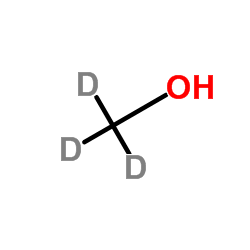

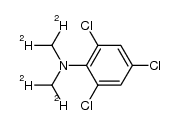





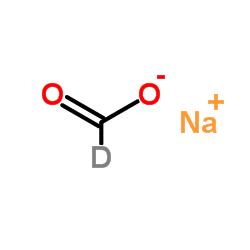
![(2H12)-1,3,5,7-Tetraazatricyclo[3.3.1.13,7]decane structure](https://image.chemsrc.com/caspic/369/23304-08-7.png)
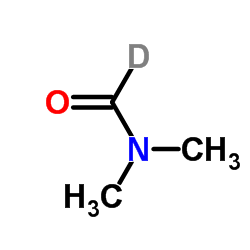
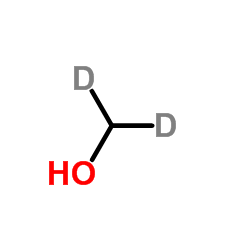
![1,1,3,3-tetradeuterio-2,2-bis[dideuterio(hydroxy)methyl]propane-1,3-diol structure](https://image.chemsrc.com/caspic/079/82414-60-6.png)

